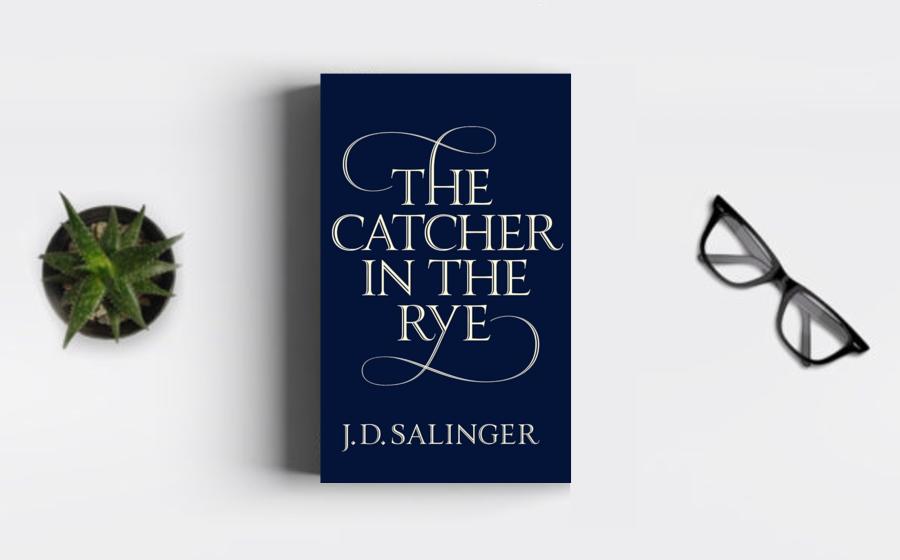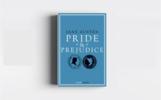In the grand tapestry of classical literature, J.D.
Salinger's "The Catcher in the Rye" emerges as a modern
masterpiece, weaving a narrative that transcends its
post-war setting to capture the timeless struggles of
adolescence, identity, and the quest for authenticity.
As a fervent lover of classical literature, the pages of
this novel unfold as a symphony of existential
introspection, inviting readers to traverse the
turbulent landscape of Holden Caulfield's psyche and
confront the perennial questions that resonate across
literary epochs.
At the heart of
"The Catcher in the Rye" stands Holden Caulfield, a
modern antihero whose narrative voice echoes the
disenchanted musings of literary figures from Hamlet to
Huck Finn. Holden's journey becomes a modern odyssey - a
quest for meaning and connection in a world he perceives
as superficial and phony.
Holden's character aligns with the tradition
of the reluctant hero, navigating the treacherous waters
of adolescence with a mixture of cynicism and
vulnerability. Salinger's portrayal of Holden's internal
conflicts, his aversion to societal norms, and his
yearning for authenticity create a character whose
struggles resonate with the timeless themes found in the
works of literary giants.
Holden's iconic red hunting hat becomes a symbol of his
quest for individuality in a world he perceives as
increasingly conformist. The hat, worn askew, serves as
a visual manifestation of Holden's desire to resist
societal expectations and forge his own path.
As
a lover of classical literature, the red hat becomes a
symbolic motif reminiscent of the distinctive
accoutrements worn by characters in epic tales and
timeless myths. Holden's insistence on maintaining his
individuality through the hat mirrors the age-old theme
of the hero's quest for authenticity, challenging
societal norms and forging a unique identity.
Holden's disdain for what he
perceives as a "phony" world propels the narrative
forward, reflecting his deep-seated aversion to societal
hypocrisy. The novel becomes a critique of the
inauthenticity Holden sees around him - an indictment of a
world where appearances often mask underlying
insincerity.
Holden's confrontation with societal hypocrisies
resonates with the satirical critiques found in the
works of Swift and Twain. Salinger's portrayal of a
disenchanted youth challenging the established order
aligns with the tradition of literary rebels who
question societal norms and reveal the incongruities of
human behavior.
Holden's pervasive sense of
loneliness becomes a central theme that transcends the
novel's post-war setting. His yearning for genuine
connections, coupled with his reluctance to fully engage
with others, creates a character whose struggles with
isolation echo through the corridors of literary
history.
Holden's loneliness aligns with the perennial theme of
the isolated individual - a theme found in works ranging
from Shakespearean soliloquies to the existential
musings of Camus. Salinger's exploration of the human
condition, as manifested in Holden's quest for
meaningful connections, becomes a timeless meditation on
the complexities of human relationships.
Holden's experiences at Pencey Prep serve as a microcosm
of the adolescent society he navigates. The novel
becomes a social commentary on the challenges of fitting
in, the pressures of conformity, and the alienation that
often accompanies the search for identity.
Pencey Prep becomes a
metaphorical arena where the rites of passage unfold - a
modern agora where Holden grapples with the expectations
placed upon him. Salinger's portrayal of the boarding
school environment invites readers to reflect on the
universality of adolescent struggles and the societal
forces that shape individual destinies.
Holden's
lingering grief over the loss of his brother Allie
becomes a poignant thread woven into the narrative. The
baseball mitt covered in Allie's poetry serves as a
talisman connecting Holden to a past he cherishes and a
brother whose premature departure haunts his present.
Allie's baseball
mitt becomes a symbol of the ghosts that linger in the
shadows of human existence. The motif of loss and
remembrance resonates with the timeless elegies found in
classical poetry and tragic dramas, adding layers of
depth to Holden's character and the novel's exploration
of the human condition.
Holden's visit to the Museum of Natural History becomes
a metaphor for his struggle with the passage of time and
the inevitability of change. The frozen moments captured
in the exhibits represent a desire for permanence in a
world that seems to constantly shift.
The museum becomes a locus of
existential reflection - a modern echo of the allegorical
landscapes found in works from Dante's "Divine Comedy"
to T.S. Eliot's "The Love Song of J. Alfred Prufrock."
Salinger's exploration of the tension between the desire
for permanence and the inevitability of flux aligns with
the thematic concerns that have animated literary
traditions for centuries.
Holden's interactions with his
younger sister Phoebe become a source of solace and
genuine connection in a world he perceives as tainted by
adulthood. Phoebe's innocence becomes a balm for
Holden's wounded soul, and their relationship serves as
a counterpoint to his broader disillusionment.
Phoebe becomes a symbol
of the enduring innocence associated with childhood - a
theme explored in the works of Wordsworth, Blake, and
other poets of the Romantic era. Salinger's portrayal of
the sibling bond becomes a touchstone of authenticity in
a narrative marked by Holden's encounters with a world
he deems increasingly corrupted.
The enigma of the novel's title, derived
from Holden's misinterpretation of Robert Burns' poem "Comin'
Thro' the Rye," adds layers of complexity to the
narrative. Holden envisions himself as the "catcher in
the rye," protecting children from the metaphorical
cliff of adulthood.
The title becomes a symbolic motif echoing
the timeless trope of the guardian figure - a figure found
in myths and fables who protects the vulnerable from the
harsh realities of the world. Salinger's use of the
title invites readers to contemplate the complexities of
Holden's character and the universal yearning for a
haven of innocence amid the challenges of growing up.
"The Catcher in the Rye" offers a bridge between the timeless themes explored by literary giants of the past and the contemporary concerns that resonate with readers today. Holden's odyssey, marked by loneliness, grief, and the yearning for authenticity, becomes a testament to the enduring power of literature to illuminate the intricacies of the human experience.
It takes its place as a modern composition,
harmonizing with the echoes of literary traditions
and inviting us to contemplate the timeless
questions that reverberate through the corridors of
human existence.






